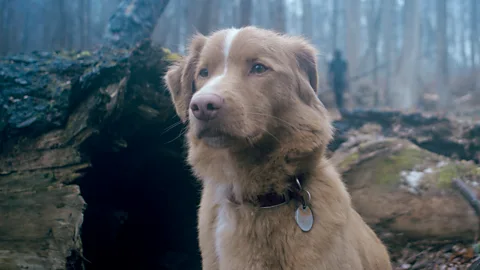The Rise of Canine Stars in Horror Cinema
In a chilling scene set in a remote farmhouse, a dark figure darts through the living room, causing dread to wash over the main character. As he begins to investigate the unsettling presence, a sudden whistling sound halts him in his tracks. This gripping moment is just one of the many that have garnered accolades for the lead actor in the new horror film Good Boy, which debuted at the South by Southwest festival earlier this year.
Indy, a Nova Scotia Duck Tolling Retriever, has been praised for his compelling performance, earning him the title of “one of the most emotive actors of his generation” from a critic at IndieWire. The Hollywood Reporter noted his “emotional power,” stating that he fully embraces his role. One of the film’s unique elements is that it tells its story from Indy’s perspective—a refreshing twist on the traditional haunted house genre.
Plot Overview
Co-written and directed by Ben Leonberg, Good Boy follows the story of Indy and his owner Todd (played by Shane Jensen), who move into Todd’s late grandfather’s eerie country home due to an unspecified illness. As Indy begins to sense malevolent forces lurking within the house, audiences are taken on a journey through his fearful yet brave exploration of the supernatural threats that endanger his and Todd’s lives.
Inspiration and Creation
Leonberg reveals that the film’s concept was inspired by his repeated viewings of the classic horror movie Poltergeist (1982). Observing the family’s dog who senses a ghostly presence before any human, Leonberg envisioned a narrative that showcases a dog’s insight into the eerie happenings. Indy, whom Leonberg initially trained himself, was chosen for his intense gaze and remarkable ability to convey emotion.
Filming Challenges
The production involved extensive shooting over three years, capturing Indy in various scenarios. According to Leonberg, he utilized simple cues and rewards to guide Indy through each scene, allowing his instinctual reactions to shine on film. The emotional connection with the character became apparent, especially as Indy’s owners often appeared blurred or obscured, emphasizing the dog’s frustration in trying to warn them of impending danger.
| Film Title | Dog Actor | Award/Recognition |
|---|---|---|
| Good Boy | Indy | Critical Acclaim |
| Caught Stealing | Tonic | Scene Stealer |
| Anatomy of a Fall | Messi | Oscar Buzz |
| Sirât | Pipa | Posthumous Award Winner |
The Evolution of Canine Roles in Cinema
Historically, dogs have been prominent figures in film, stretching back to the days of stars like Rin Tin Tin and the series of collies portraying Lassie. Critics have noted a recent resurgence of canine characters in cinema, with many appreciating their ability to express human emotions in a compelling way. Wendy Mitchell, author of Citizen Canine: Dogs in the Movies, highlights this trend saying, “There’s been a real resurgence of dogs in movies recently, showcasing their emotional range.”
Training and Performance
Animal trainer Bill Berloni emphasizes that the evolution in training methods has significantly improved canine performances in films. He advocates for positive reinforcement techniques, which nurture the dog’s natural abilities. Berloni has worked closely with filmmakers, ensuring that animals are not treated as mere props but as integral parts of the story, thus enhancing their performances.
As Good Boy prepares for its US release on October 3 and in the UK on October 10, Leonberg emphasizes that Indy has thrived in his role and is eager for more opportunities. Regardless of whether animal performances ever receive the same accolades as their human counterparts, it is clear that these remarkable dogs continue to capture the hearts of audiences worldwide.


